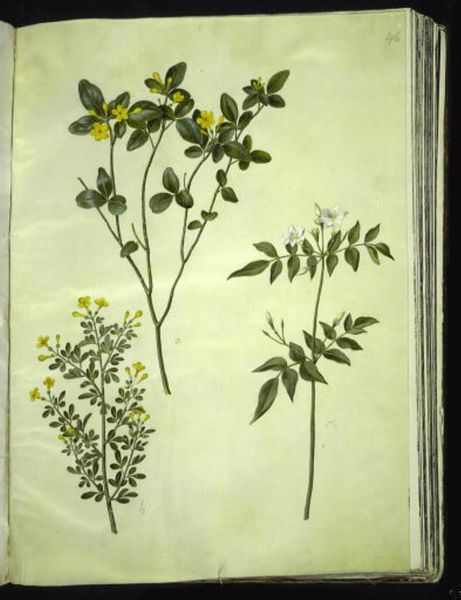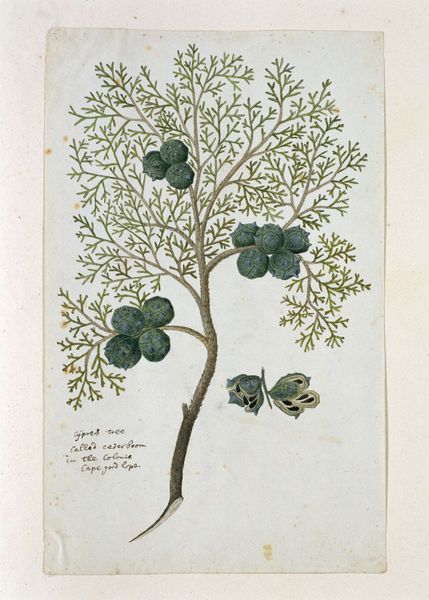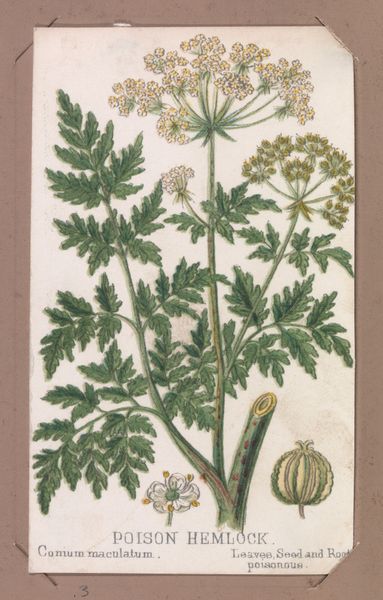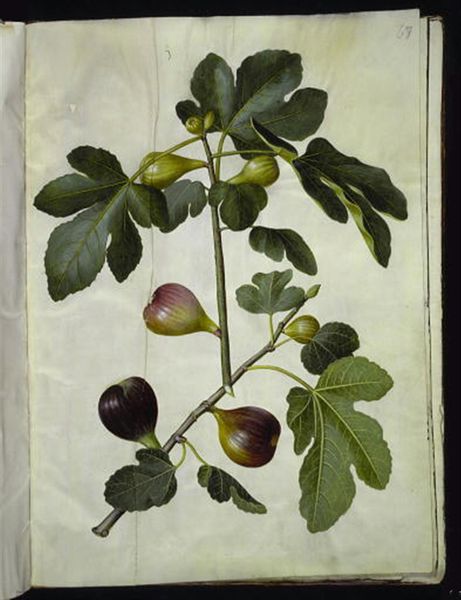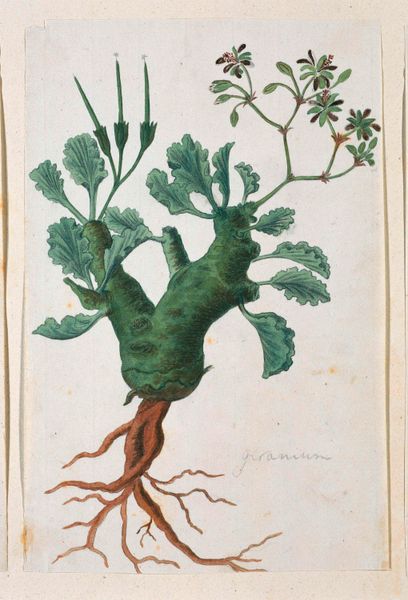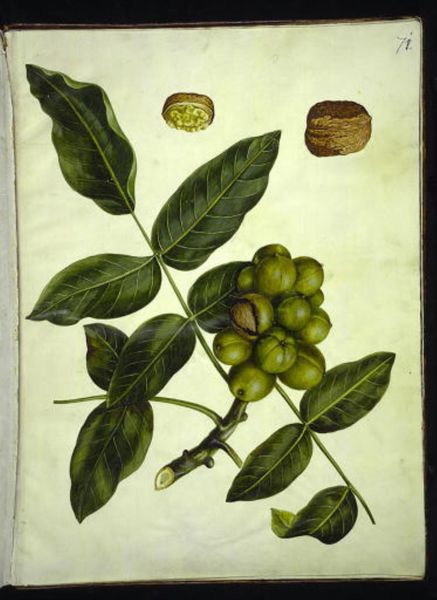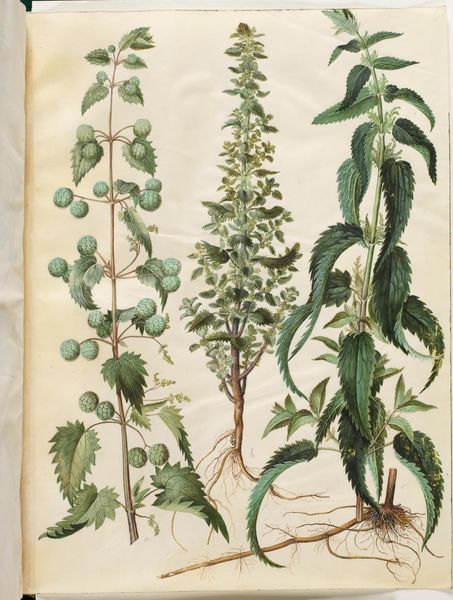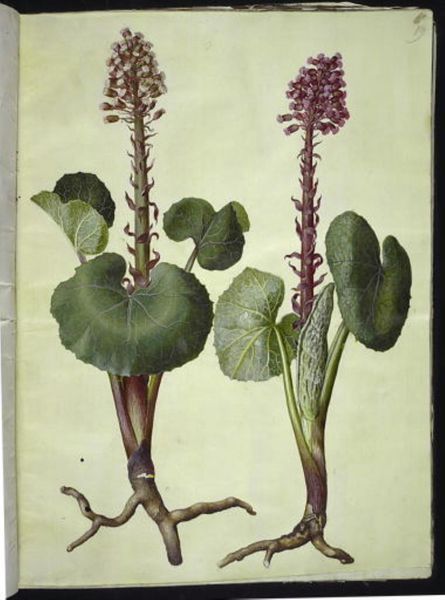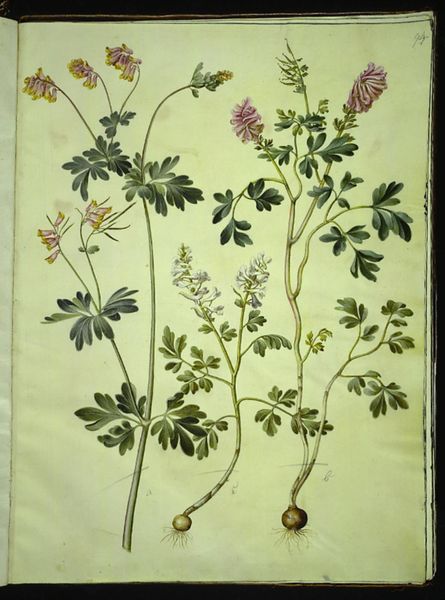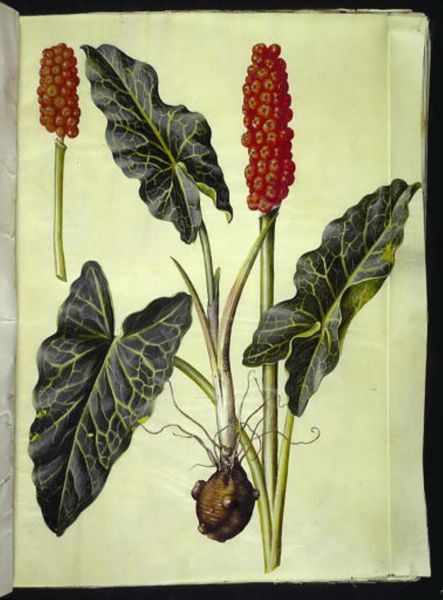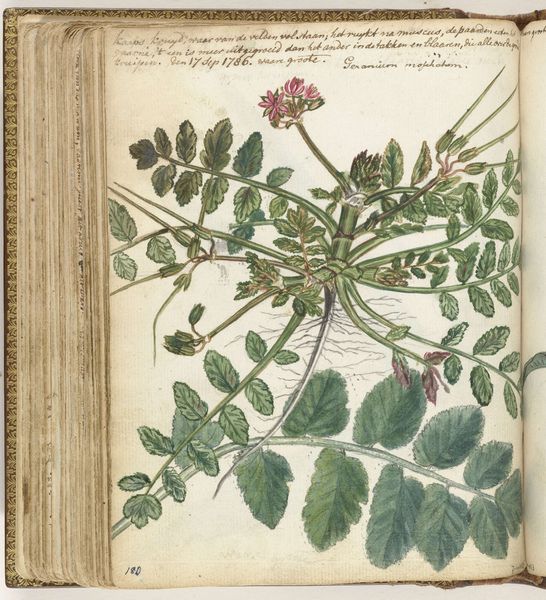
drawing, gouache
#
drawing
#
gouache
#
11_renaissance
Dimensions: 505 mm (height) x 385 mm (width) (bladmaal)
Hans Simon Holtzbecker made this botanical study of the common grape vine, Vitis vinifera, with watercolor and gouache, a kind of opaque watercolor, sometime in the mid-17th century. Botanical art served varied purposes during this period of increasing European trade and colonization. On the one hand, meticulous images of plants codified knowledge for scientific communities and the public, but, equally, the circulation of flora from the colonies was of great economic importance. Holtzbecker worked in Denmark under King Christian IV. This nation's imperial reach was smaller than other European powers, but it maintained trade routes to both the Americas and the East. Botanical knowledge was important in maintaining Denmark's economic power. As historians, we can consult documents of trade and empire to understand more about the networks that made this image possible. In doing so, we recognize that even the seemingly neutral genre of botanical art is firmly embedded in larger historical structures.
Comments
No comments
Be the first to comment and join the conversation on the ultimate creative platform.
